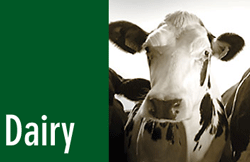New research has shown that drinking milk after a workout can help the exerciser gain more muscle and lose more fat than sports drinks.
The reason, researchers believe, is that, in addition to liquid for hydration and carbohydrates for energy, milk is also rich in protein, while sports drinks contain little or no protein.
“The protein in milk is high quality,” Stuart Phillips, an associate professor of kinesiology at McMaster University in Hamilton and lead author of the study, said in an interview. “We also think the way milk proteins are digested by the body confers some benefits.”
The new study, published in the American Journal of Clinical Nutrition, involved 56 men aged 18 to 30 who signed up for a rigorous five-day-a-week weightlifting program over a 12-week period. The participants were randomly assigned to one of three groups, based on their recovery drink.
One group drank 500 millilitres (about two cups) of skim milk that contained 17.5 grams of protein, 25.7 grams of carbohydrates and 0.4 grams of fat. A second group received a soy drink with identical ratios of nutrients, while a third group got a sports drink.
All three beverages contained 735 calories and were flavoured identically with vanilla and served in opaque containers so participants did not know what exactly they were drinking. Over the study period, all the young men gained muscle mass and most lost fat, but the milk drinkers came out ahead across the board.
For example, the milk-drinking group lost, on average, two pounds of fat each, compared with one pound each for those in the sports-drink group. The soy-beverage drinkers neither lost nor gained fat. The milk drinkers also came out on top in muscle gain, adding, on average, 2.5 pounds more muscle than the soy-beverage drinkers and 3.3 pounds more than the sports-drink group.
“The practical results are obvious: If you want to gain muscle and lose weight as a result of working out, drink milk,” Dr. Phillips said.
While the study did not involve aerobic exercise, he noted that other research has also pointed to the benefits of milk – and chocolate milk in particular – for rehydration and recovery. At marathons, for example, chocolate milk – which is packed with more carbs than regular milk – has become the recovery drink of choice for many finishers.
The research was funded by the Canadian Institutes of Health Research and the U.S. National Dairy Council. Dr. Phillips stressed that the dairy council grant came with no strings attached and the lobby group had no input on the study design or outcome.


 Last week I got to attend a media event at
Last week I got to attend a media event at  Dairy Markets Week in Review
Dairy Markets Week in Review